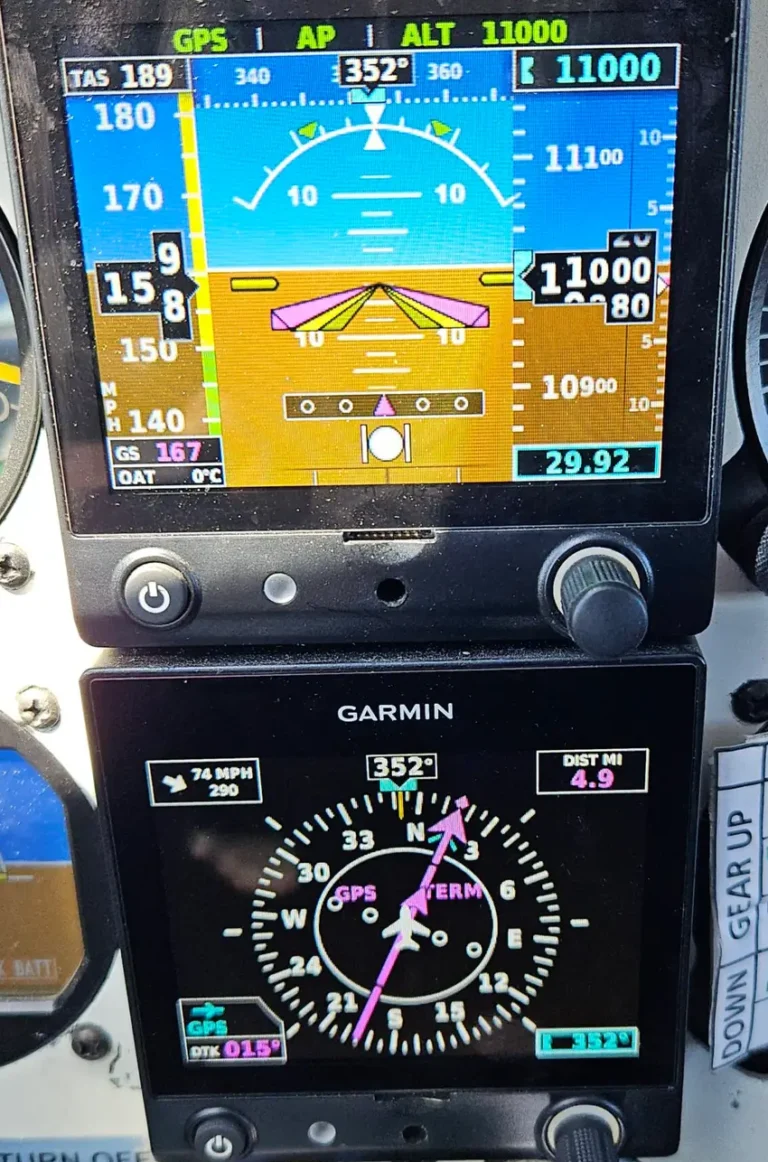The winds were strong, there was ice in the clouds, and the “Oh My!” was actually “Oh @*!#” No, it wasn’t bad or dangerous, just something my wife wasn’t expecting at the time.
With my second son at college in St. George like his older brother, and my wife’s dad living in St. George, it’s become somewhat of a regular flight. The Mooney turned a 6 hour drive into what is typically just over a 2 hour flight. Once when we had brutal headwinds it took almost 4 hours coming home, but it was still better than driving.
The biggest day in my son’s college music education was coming up, and it would be paired with another performance. He is required to do a solo recital his Junior and Senior year for his major. He had also been playing trumpet, oboe, flute, and piccolo in a pit orchestra for The Man of La Mancha and during a four week run at the St George Historic Opera House. It just so happened that his recital and the closing day coincided.
Winds
I needed to file IFR to get out of the LA Basin and our cruising altitude would be higher than the freezing level, but I didn’t see any issues with the flight. The layer would be a couple thousand feet thick, and we would be on top before air temps dropped below freezing. As the flight progressed, there would be higher clouds that we should be above until nearing Las Vegas where it would clear up before finding ourselves below a higher layer of clouds. All of this of course was just a forecast which sometimes is accurate and sometimes is not. On this flight some of it would be accurate.
I left work in the early afternoon and stopped by the house to pick up Kathy on the way to the airport. At 4:36pm we were airborne and climbing towards an overcast layer reported at 3,500′. About three and a half minutes later we broke out on top into blue skies. The closer we got to the San Bernardino mountains the higher the tops of the clouds reached, with the 10,064′ peak of Mt Baldy barely sticking out of the top.
There was a short break in the clouds and we could see down into Victorville and Apple Valley but up ahead were more clouds. The winds were much higher than forecast, averaging in the upper 60’s and topping out at 74mph at one point. With the winds coming from the northwest, I found us flying a heading of 352° to maintain a ground track of 15°. We were crabbing 23° to maintain our course!
Ice
The forecast had called for a short section of overcast ahead but it looked like we could top it so I asked for a climb to 13,000′ from our current altitude of 11,000′. That worked for awhile, but I could see we were eventually not going to be able to top what was ahead. They say “Ice is where you find it,” which is to say that sometimes you expect it and don’t pick up any, and other times when you don’t expect to pick up ice you do.
It was below freezing, and I wasn’t sure if 11,000′ was going to get us below the clouds or just put us closer to 0° C where there might be more liquid and less ice crystals. I also knew it was supposed to turn into a high overcast up ahead, just didn’t know exactly how far up ahead. I decided to continue on into the clouds at 13,000′ and if we started picking up anything more than a trace amount of ice I would ask for lower.
When we had the plane painted I specifically wanted a dark color on the leading edge to make it easy to see any ice accumulation. We went into the first cloud and eventually out the other side and there were a few specks of ice on the leading edge and nothing on the temp probe sticking out of the side window.
After a few more trips in and out of the clouds we went into one that frosted over the windscreen. There was still just some trace rime ice on the leading edges but that was enough for me. I didn’t know how much further the clouds would last at our altitude but through breaks in the clouds I could see the ground below and that the bottoms weren’t very far away. I told ATC I was picking up some light rime icing and asked for 11,000′.
With our descent clearance we started down and around 12,000′ came out of the bottom of the clouds and leveled off in clear air at 11,000′. The sun was shining over Vegas and with the reroute from ATC we went right over the top of McCarran with a great view of the Vegas Strip.
"Oh @*!#!"
Now that you have the winds and ice part of the story, I guess I should get to the “Oh @*!#!” It is my standard practice to run a tank dry on long cross country flights. (No, this is not reckless behavior, it is outlined in the pilot operating handbook for the Mooney.)
This flight didn’t qualify as a long flight, but I decided not to tanker extra fuel. I had enough for the flight plus my standard 10 gallons of reserve. My other personal minimum is that I want to land with ten gallons in the tank I am landing on.
Running a tank dry in a carbureted Mooney is a no big deal, ho-hum event. I know that when the engine monitor shows zero gallons left I have about 5 minutes of flying time before it is actually empty. When it hits empty and starts sucking air the fuel pressure steadily drops, but because there is fuel in the carb bowl if you catch it and switch tanks before the pressure hits zero the engine keeps on purring and nobody is the wiser.
The key word in that sentence is “if” and makes all the difference. We were in VFR conditions getting close to beginning our descent into St George. The red warning light on the panel had blinked in front of me and the engine monitor showed a red zero for the fuel in the tank I was running on. I kept a watch on the fuel pressure and was also listening for the weather at St George on my #2 radio.
We were finally close enough and line of sight to St George for the radio to pick up the automated weather. I started writing it down on my kneeboard when the engine went quiet. With all the other times I’ve run a tank dry and switched it before the engine quit I didn’t give it a second thought, and didn’t warn her. Had I warned my wife what was coming it would have possibly garnered a different response. It probably also didn’t help that she was half napping…
She immediately let out a loud, “Ah! Oh @*!#!” as her hand flew to her mouth.
My response, knowing I was close to running dry, was “There it is,” and I reached down and immediately switched tanks. Less than 7 seconds later the engine came back to life as fuel was added to the air/spark mixture that was already taking place in the cylinders.
I apologized and with her hand on her racing heart she said “That was terrifying, I don’t ever want to do that.”
The rest of the flight was uneventful and we touched down on runway 01 and taxied to transient parking.
If you are taking notes at home:
- Running a tank dry is ok
- If you decide to you should always warn your passengers
- Do your best to catch it and switch tanks before the engine quits (even with the warning passengers don’t find it reassuring)
We had a great time in St George. My son did an excellent job playing for over 30 minutes. Man of La Mancha was very well done, and from our seats we could se him switching between all the instruments. Between shows we took him to a late lunch to celebrate his birthday. Just another great weekend courtesy of our Mooney Time Machine.



